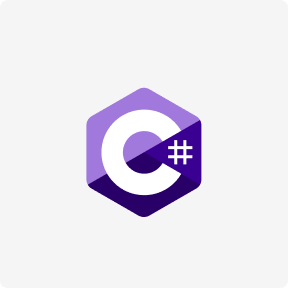Different platforms have different specifications and design guidelines regarding an app. Updates and new versions can always be released later; trying too hard at this early stage could prevent your app from ever reaching the market. Focus on creating something solid rather than striving to perfect every feature or function in it. Make sure the interface is effortless to use and ensure its ease of use is uncompromised. There are multiple frameworks to keep in mind for app development; we will discuss them more later.

The other two are very important elements in the app development process. The front end refers to whatever the users see in an app as well as the working of an application but it’s all useless until the back end is developed. The back end is what bridges the User Interface to the system, thus enabling the app to function properly. Back-end engineering involves Data storage, Server-side logic, Versioning, Data Integration, and User management.
What Is Mobile App Development?
This step will ensure you whether the things are going in the right direction or not. Your user experience (UX) designer builds interaction between different design elements while your user interface (UI) designer builds the overall look and feel of your app. These act as a guide for informing your engineers of your vision with the final product and how its interaction with the customers should feel. This phase also deals with certain questions like – How your app should look like? You also have to decide the kind of app you aim to develop and the time you need to build it.
Mobile app development refers to the process of producing software specifically for smartphones, tablets and other handheld devices. Coding an application and designing its interface is part of this overall development process. Now that you’re at this stage, you should build a rapid prototype. One cannot truly comprehend the experience of an app without touching it & checking how the workflows. Build a prototype and get it into a user’s hand to get a quick idea of how it works & feels.
Subscribe to the Developer Insider Newsletter
It’s time to release the app into the wild after it’s been stabilized. Depending on the platform, there are a variety of distribution alternatives. As an application progresses through its lifespan, more individuals are invited to check it out, test it, offer comments, and so on. Prototype apps, for example, may be exhibited or delivered solely to key stakeholders, whereas release candidate applications may be released to clients who sign up for early access. The ASO cycle likewise requires a vital comprehension of your objective client base, including the watchwords your potential clients are utilizing to discover applications like yours.

It includes the data, interface, and functionality of the app, which further will be specified and detailed. And then, the technology architecture and the technology stack will be finalized to establish the detailed app design. Modern technology has made PWAs look and feel extremely similar to a native app experience. You can even send push notifications to users, which get delivered via the web browser.
Hosting Server Read Timeout
From there, you can then make an MVP that would serve its primary objective without unnecessary features or bells or whistles. Mobile app development is also an integral component of UX design when considering what you envision for the look and feel of your app, as well as creating wireframes or sketches to understand its functionality. Apple’s iOS and Google’s Android mobile operating systems continue to lead in mobile application market share.
This hybrid cloud solution extends the reach of your central management interface to deliver bare metal clusters into restricted environments. In addition, RHACM features an improved user experience for deploying OpenShift in Nutanix, expanding the range of partnerships providing metal infrastructure where you need it. We’re pleased to announce Red Hat OpenShift 4.14 is now generally available. It might take some time for developers to feel comfortable taking the path less traveled and building outside the constraints laid out for all of us by the powers that be.
Understanding The Mobile App Development Life Cycle
From a development standpoint, cross-platform native is more affordable and shortens the development timeline. App development tools, languages, and platforms are more integrated, and Javascript is used for cross-platform codes. With so many options available on the market for app development, you’ll need to narrow down your options based on your skills, goal, app type, and budget. But they also make it possible to test, optimize, debug, and maintain your app post-launch. Depending on your development method, you might need to build two separate versions of the app—one for iOS and one for Android.

Additionally, developers should have the guidelines for developing native apps in the back of their mind to avoid any hitches during deployment. Without a software development process – you can quickly lose track, exceed budget, and surpass timelines. A software development process can help you streamline your project, offer the right direction, and always keep you on track. Large projects can be tiring both for the client and the software development team. Frustration starts building up when timelines stretch for several months and no progress is visible. That’s why you must break your project into simple, achievable milestones.
— App Designing Process
The developers create KLOCs (thousands of lines of code) using programming languages they feel comfortable with. The development team aims to achieve mobile app development developer velocity while ensuring quality delivery. SDLC stages mostly stay constant no matter what software development methodology we follow.
- Mobile application development has been trending upward for years.
- Prototyping is a process of defining a concept in visual terms and evaluating how the app might develop to correct a misconception.
- Apple iOS apps are published to Apple iTunes App Store, whereas Android apps are published to Google Play Store.
- These apps fall into a wide range of categories, including gaming apps, music apps, calendars, communication apps, and more.
- During this step, a layer of the app is created and individuals are able to interact with it directly.
- Perhaps, one of the more apparent industries at risk includes blockchain and crypto.
With these figured out, you can then proceed to create a prototype app. There are plenty of tools developers can use in developing the prototype available from solution providers. In this stage, your developers want to make sure that everything in the app actually works. By no means is this list exhaustive, but these questions can help guide the planning process for your app. Don’t build the app just for the sake of having an app, because it’s far better to have not built at all than to build something subpar that your target audience won’t enjoy. You can now centrally deploy and manage on-premises bare metal clusters from Red Hat Advanced Cluster Management (RHACM) running in AWS, Azure, and Google Cloud.
Share What You Learned Across the Team
Delivery of the application’s visual plan is named as a mockup or a high-loyalty plan. The wireframes join with your style direct plan norms and give the interconnection between different components of the visual plan, along these lines setting up the app development flowchart. Now let’s take a look at hybrid apps compared to native apps and see the pros and cons of these development frameworks. With a cross-platform app, the same code is used for all platforms. So you can write your code once, and the app can still be installed natively on both iOS and Android devices. These are typically installed through the Apple App Store or Google Play Store.
PlatformCon 2023: This Year’s Hottest Platform Engineering Event
Be sure to check out Supercharging developer productivity with SAP Build Code and Why SAP Build Code is a Game-Changer for SAP Developers. Each enterprise is unique and so are their expectations from the enterprise software. Not only does SAP provide the best-in-class enterprise solutions, it also provides a comprehensive set of tools and technologies for organizations to extend their SAP systems using SAP BTP. This practice looks good ideally, but it is often counterproductive. One person’s habit of playing the hero often puts extra pressure on the other members, and sometimes you miss out on crucial aspects. The entire team loses because one person desperately wants to win.
Planning Stage
By leveraging the built-in features of smartphones, apps offer an enhanced user experience compared to mobile web browsing. Your app developer should be familiar with most of these guidelines and should be able to consult with you to ensure the mobile app can be approved without any issues. Once the app is published, you want to make sure that you have some sort of marketing campaign in place to make publishing the app a success. While people have understood the value of collaboration in software development over time, some members of your team might want to play the hero. They might want to pull the higher number of shifts or move heaven and earth to complete the project faster. V-shaped planning is best if your team works on a small product with precise requirements.
